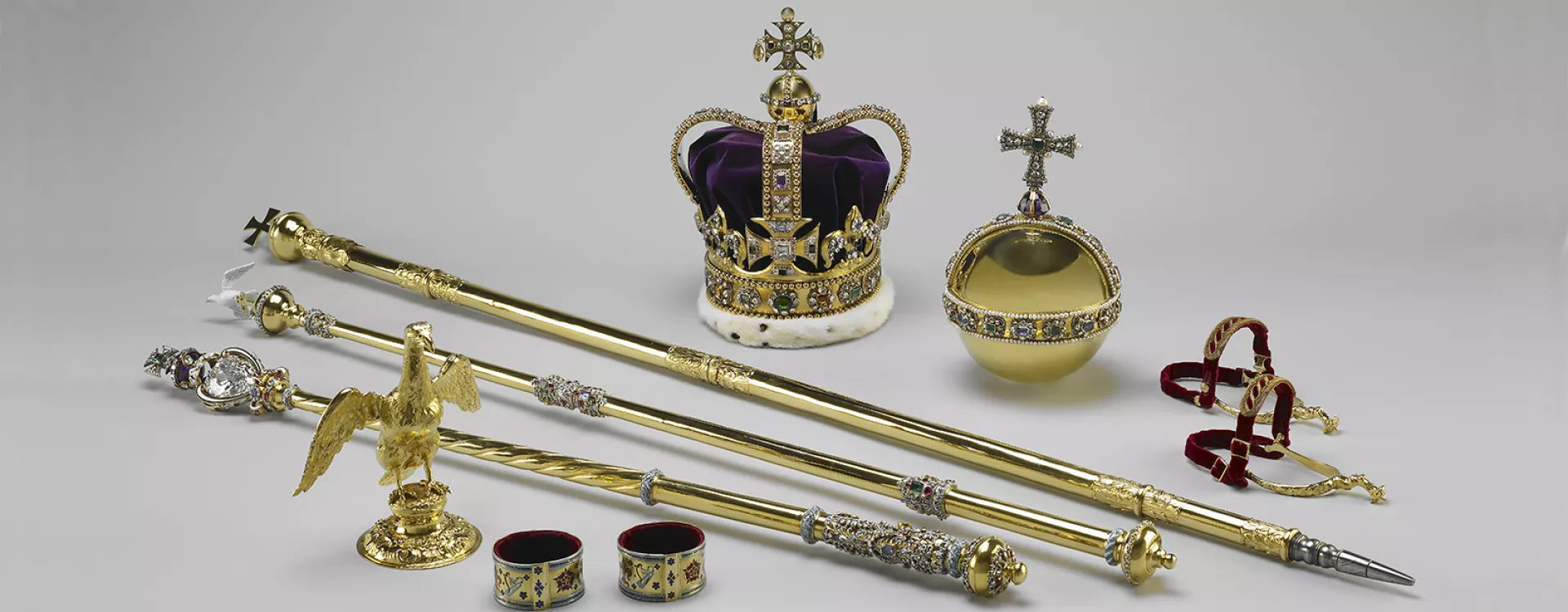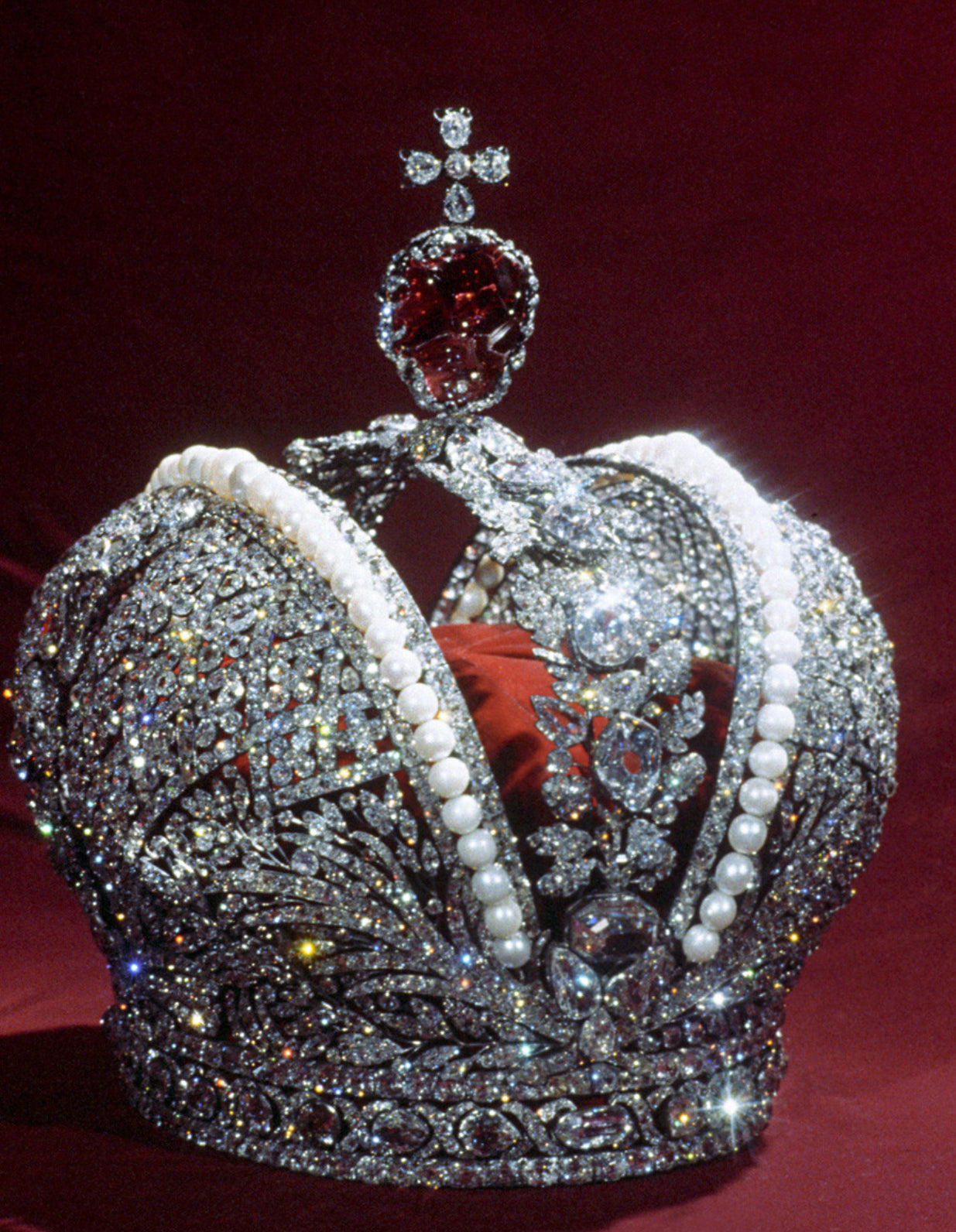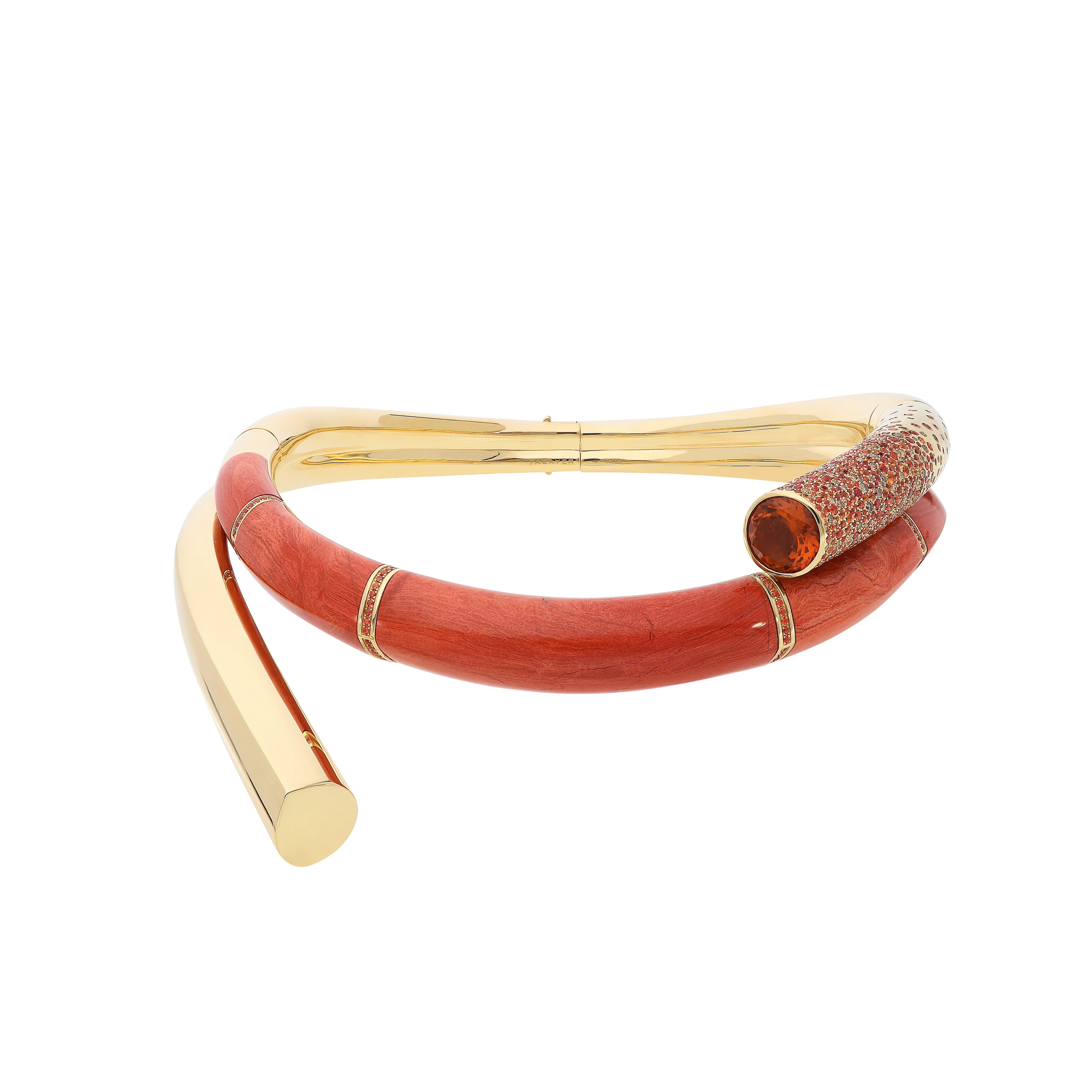
Gems of Majesty: The Crown Jewels of the United Kingdom
The Crown Jewels of the United Kingdom, rich in history, symbolism and exquisite craftsmanship, stand as a remarkable testament to centuries of royal heritage and the enduring legacy of the nation. Their beauty embodies the opulence and grandeur of the British monarchy, forever fascinating people with their timeless allure and serving as a poignant symbol of national identity.
Here, we explore the intricate narrative of the Crown Jewels, revealing their profound significance, intriguing stories and intricate details. Among the iconic pieces are St. Edward’s Crown, the Imperial State Crown, the Sovereign’s Scepter with Cross and the Sovereign’s Orb, each adorned with some of the world’s most precious gemstones.
History of the Crown Jewels
The Crown Jewels of the United Kingdom trace their origins to ancient times, with some pieces dating as far back as the 12th century. Passed down through generations of monarchs, these jewels have played an important role in coronations, weddings and other significant royal ceremonies, becoming an integral part of British regal tradition.
In the mid-17th century, the medieval Crown Jewels faced a tumultuous fate. Following the execution of Charles I in 1649 at the close of the English Civil War, items from the Royal Collection were sold by Parliament to fund the new government. Jewels were sold, while items of silver and gold were melted down to create coins.
However, with the restoration of the monarchy in 1660, Charles II ordered the creation of new regalia for his coronation in 1661. These newly crafted pieces make up a significant portion of the Crown Jewels seen today.
The collection now represents the most complete collection of royal regalia in the world. It comprises over 100 extraordinary items and showcases some of the world’s most famous gemstones, including the illustrious Cullinan and Koh-i-Nur diamonds.
The collection’s long history, spanning almost a thousand years, and its continued ceremonial use during such events as the coronation service and the State Openings of Parliament, make it one of the richest expressions of sovereign magnificence in history.
The Coronation Regalia
At the heart of the Crown Jewels collection lies the Coronation Regalia, which includes sacred objects essential for the monarch’s coronation ceremony. Among these treasures are St. Edward’s Crown, reserved exclusively for the crowning moment; the resplendent Imperial State Crown, often worn by the monarch during the State Openings of Parliament; the magnificent Sovereign’s Sceptre with Cross, embellished with the renowned Cullinan I diamond; and the emblematic Sovereign’s Orb, representing the monarch’s dominion over the realms and territories of the British Empire. Delve deeper into the symbolism and allure of each exquisite piece below:
St. Edward’s Crown
Worn only once in a monarch’s reign at the moment of coronation, St. Edward’s Crown is the most significant of all the Crown Jewels. This spectacular solid gold crown was originally made for the coronation of Charles II in 1661 by Crown Jeweller Robert Vyner. It served as a replacement for the medieval crown that was melted down in 1649 following the execution of Charles I. The original medieval crown was thought to date back to the 11th-century royal saint, Edward the Confessor, who reigned as King of England from 1042 to 1066. St. Edward’s Crown was last used for the crowning of King Charles III in 2023.

The crown weighs nearly five pounds and is reportedly adorned with 444 exquisite gemstones. Among these gems are 345 rose-cut aquamarines, 37 white topazes, 27 tourmalines, 12 rubies, 7 amethysts, 6 sapphires, 2 jargoons, 1 garnet, 1 spinel, 1 carbuncle and 1 peridot.
Although it’s not a replica of the medieval design, the crown follows the original in having two arches, four crosses pattée and four fleurs-de-lis. The two dipped arches culminate in the iconic monde topped with a cross pattée. Symbolically, the monde and cross represent the monarch’s authority over both spiritual and temporal realms, embodying the union of religious and secular power.
As a final touch, the crown’s purple velvet cap is elegantly trimmed with ermine, adding to its regal splendor.
The Imperial State Crown
Among the illustrious treasures of the Crown Jewels, one stands out as particularly iconic—the Imperial State Crown. This resplendent crown holds a place of honor in royal ceremonies, most notably worn by the monarch as he or she departs Westminster Abbey following the coronation ceremony, as well as during the grand State Openings of Parliament.

Crafted for the coronation of King George VI in 1937, the Imperial State Crown replaced a crown originally made for Queen Victoria, bearing witness to the enduring legacy of the monarchy.

The Imperial State Crown is a spectacle of regal elegance, boasting a dazzling array of 2,868 diamonds, 17 sapphires, 11 emeralds, 4 rubies and 269 pearls, meticulously set into its design of arches, fleurs-de-lis and crosses pattée.
Noteworthy among its jewels is the famed Black Prince’s Ruby, positioned prominently at the front and center of the crown. This striking gem, actually a 170-carat red spinel, is believed to have once belonged to Edward, the Black Prince, son of King Edward III. According to legend, the stone was given to Edward in 1367 by Pedro “The Cruel,” King of Castile, who took the stone from a Muslim King in Granada. The stone was also reportedly worn by King Henry V, set in his helmet during the Battle of Agincourt in 1415.

Positioned just as prominently, yet beneath the Black Prince’s Ruby, is the illustrious Cullinan II diamond, also known as the Second Star of Africa. This magnificent diamond, weighing approximately 317.4 carats, was cut from the legendary Cullinan diamond, the largest flawless diamond ever discovered at 3,106 carats.
The Cullinan diamond was unearthed in 1905 in what is now modern-day South Africa and was named after Thomas Cullinan, the chairman of the mining company. Over eight months, three skilled polishers reportedly worked 14-hour days to meticulously cut and polish nine large stones from the original diamond. Additionally, a total of 97 smaller brilliant-cut diamonds were created. Among these stones, the two largest are the Cullinan II and the Cullinan I, with the latter set atop the Sovereign’s Scepter with Cross.
Suspended from the intersection of the crown’s arches at its pinnacle are four large pearls known as Elizabeth I’s earrings, though it’s uncertain if the queen ever wore them. Atop the intersection rests the iconic monde and cross, symbolizing the monarch’s dominion over both spiritual and temporal realms. Set with more than 650 rose- and brilliant-cut diamonds, the magnificent orb and cross originally adorned Queen Victoria’s State Crown of 1838. The cross itself showcases the stunning St. Edward’s Sapphire, reputedly worn by Edward the Confessor in a ring.

Adding to its majesty, the Imperial State Crown also incorporates the Stuart Sapphire, set at the back of the crown. The stone might have belonged to King Charles I, whose son, James II, is said to have smuggled the jewel out of the country when he was deposed during the Glorious Revolution of 1688. The Stuart Sapphire eventually made its way back to England and bears association with the Stuart monarchs.

Beneath its resplendent exterior, a luxurious purple velvet cap cradles the wearer in regal comfort, adding a touch of opulence to the crown’s majestic ensemble.
The Sovereign's Scepter with Cross
At the heart of royal symbolism lies the Sovereign’s Scepter with Cross, made for the coronation of King Charles II in 1661 and used in every coronation since. One of two scepters held aloft by the monarch during the coronation ceremonies, the Sovereign’s Scepter with Cross represents the sovereign’s temporal power and is associated with good governance.

The scepter’s shaft, crafted from solid gold, is adorned with a multitude of precious gems, including the legendary Cullinan I diamond, also known as the Great Star of Africa, the largest colorless cut diamond in the world. Weighing more than 530 carats, this breathtaking pear-shaped diamond was added to the scepter in 1901, sitting at its top within an enameled heart-shaped structure.
Perched above the magnificent Cullinan I diamond are two other notable gems, integral to creating the iconic monde and cross. Crowning the center of the cross is a grand step-cut emerald, radiating with verdant allure. Beneath this cross, a splendid orb takes form, crafted from a sizable faceted amethyst adorned with diamonds, emeralds, rubies and spinels.
The Sovereign’s Scepter with Dove
The Sovereign’s Scepter with Dove, traditionally known as The Rod of Equity and Mercy, represents the sovereign’s spiritual role.

Created by Crown Jeweller Robert Vyner in 1661, the scepter features an enameled dove with outspread wings representing the Holy Ghost.
The Sovereign’s Orb
The Sovereign’s Orb, a revered symbol of the sovereign’s power and representing the Christian world, commands attention within the Crown Jewels. Crafted in the 17th century from solid gold and adorned with glittering gemstones, this spherical masterpiece embodies the monarch’s rule over the vast realms and territories of the British Empire. When held in the right hand by the monarch during coronation ceremonies, the Orb becomes a palpable emblem of the weighty responsibilities and noble duties inherent in kingship.

Weighing just more than two pounds, the orb is divided into three sections by bands of jewels to represent each of the three continents known in the medieval period. The orb’s golden surface glimmers with emeralds, rubies and sapphires, framed by diamonds and pearls, each meticulously chosen for its brilliance and symbolism.
Crowning the orb is a majestic cross, a testament to the monarch’s steadfast allegiance to the Christian faith. Crafted from shimmering diamonds and pearls, it rests atop a grand faceted amethyst, its radiant presence a beacon of divine supremacy and grace.
The Sovereign’s Ring
The Sovereign’s Ring is composed of a blue sapphire with a ruby-cross overlay set in a halo of diamonds. A symbol of kingly dignity, the ring was made for the Coronation of King William IV in 1831, and all sovereigns from King Edward VII onwards have used it at their coronations.
Coronation Spoon and Ampulla
Steeped in centuries of history, the Coronation Spoon stands as the oldest treasure within the coronation regalia, dating back to the 12th century. Remarkably, it’s the sole surviving piece of royal goldsmiths’ work from that era. A pivotal element of the coronation ceremony, the spoon plays a sacred role in anointing the monarch with holy oil.

Accompanying the Coronation Spoon is the gold Ampulla, an eagle-shaped flask designed to hold the precious holy oil. Notably, the Ampulla features a cleverly crafted opening in the eagle’s beak to facilitate the pouring of oil into the awaiting spoon. This ingenious design ensures the seamless execution of this sacred ritual, imbuing the coronation ceremony with profound significance and solemnity.
Queen Mary’s Crown
Queen Mary’s Crown is a dazzling spectacle, adorned with an impressive array of 2,200 brilliant- and rose-cut diamonds set in a silver frame lined with gold. The crown also features removable arches and is fitted with a purple velvet cap and ermine band. Originally created for the Coronation of Queen Mary in 1911, consort of King George V, this piece boasts a rich history steeped in regal grandeur.
During the 1911 coronation, this magnificent crown held three large diamonds—the illustrious Koh-i-Nur diamond at the front and center of the crown, as well as the 94-carat, pear-shaped Cullinan III diamond, set in the cross pattée atop the monde, and the 63-carat Cullinan IV diamond.

The Koh-i-Nur diamond, originating from India and weighing approximately 105.6 carats, has a rich history spanning centuries. It has passed through the hands of various rulers and empires, including Indian, Persian and British monarchs. Renowned for its colorless appearance and exceptional clarity, the Koh-i-Nur is a prized gemstone of immense value and historical significance.
Queen Mary later gifted this precious stone to her daughter-in-law, Queen Elizabeth The Queen Mother, the consort of King George VI, for use in her crown during his coronation. Queen Mary then reportedly replaced the Koh-i-Nur diamond in her crown with the Cullinan V diamond.
In later years, the Cullinan diamonds in Queen Mary’s Crown were replaced with crystal rock replicas. However, in a moment of significant renewal, the crown underwent a reset in 2023, featuring the authentic Cullinan III, IV, and V diamonds for the Coronation of Queen Camilla, wife of King Charles III. This gesture served as a tribute to Queen Elizabeth II, as these diamonds had been part of her personal jewelry collection for many years, often worn as brooches. This exquisite addition not only amplifies the grandeur of the occasion but also serves as a poignant link to the monarchy’s enduring legacy.
Guardians of Tradition
Today, the Crown Jewels are showcased at the Tower of London in England, where visitors can marvel at their magnificence. The responsibility for their safekeeping lies with the Yeoman Warders, affectionately known as Beefeaters. This dedicated team of wardens meticulously ensures their security, employing cutting-edge technology and strict protocols to protect these invaluable treasures.
The Crown Jewels of the United Kingdom are enduring symbols of royal legacy and regal splendor. From their ancient origins to their contemporary significance, these treasures continue to captivate and inspire, forming a majestic narrative that spans centuries. As embodiments of symbolism and custodians of tradition, the Crown Jewels maintain relevance in modern times, serving as potent symbols of national identity and pride, while embodying the enduring legacy of the British monarchy in an ever-changing world.



